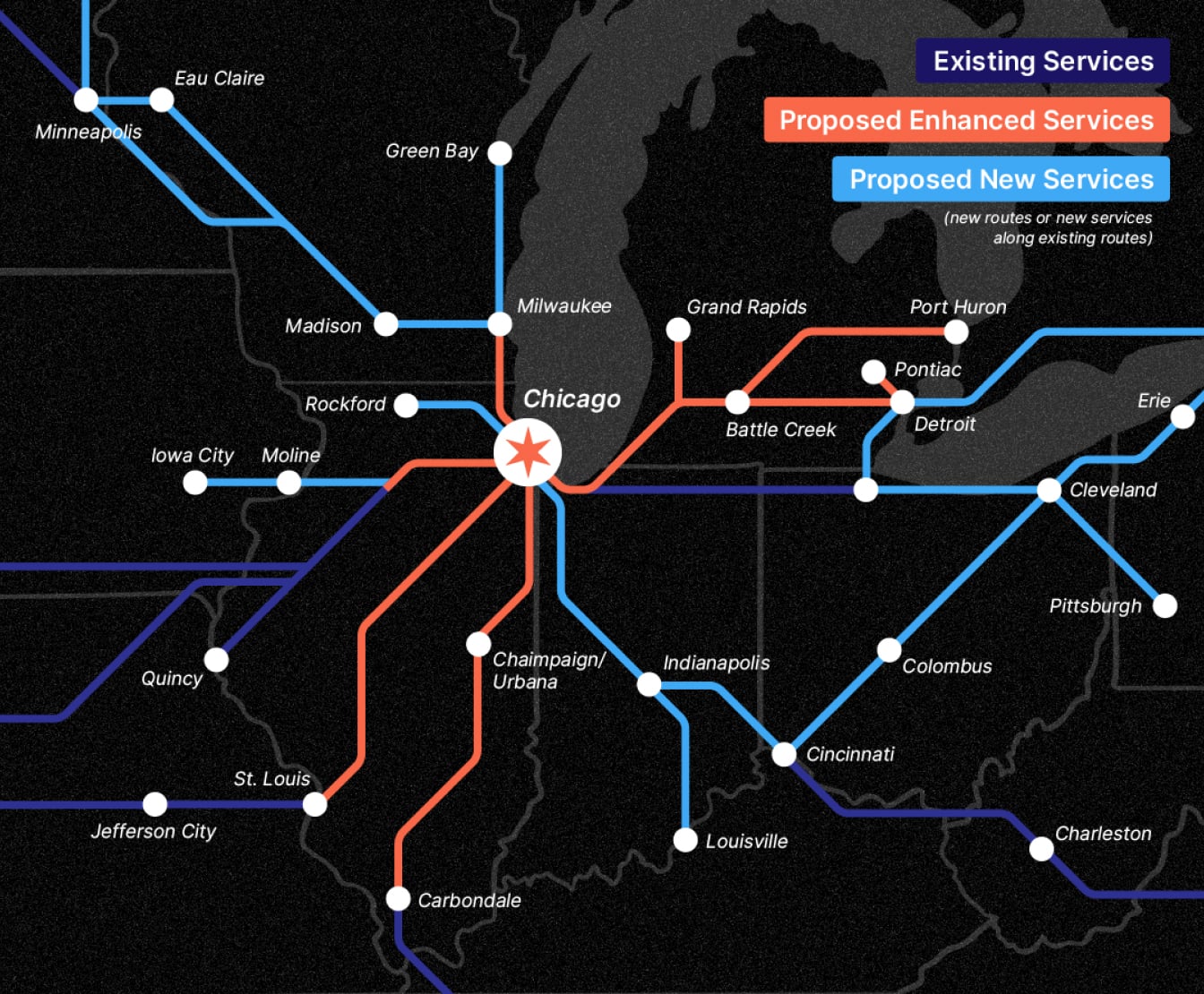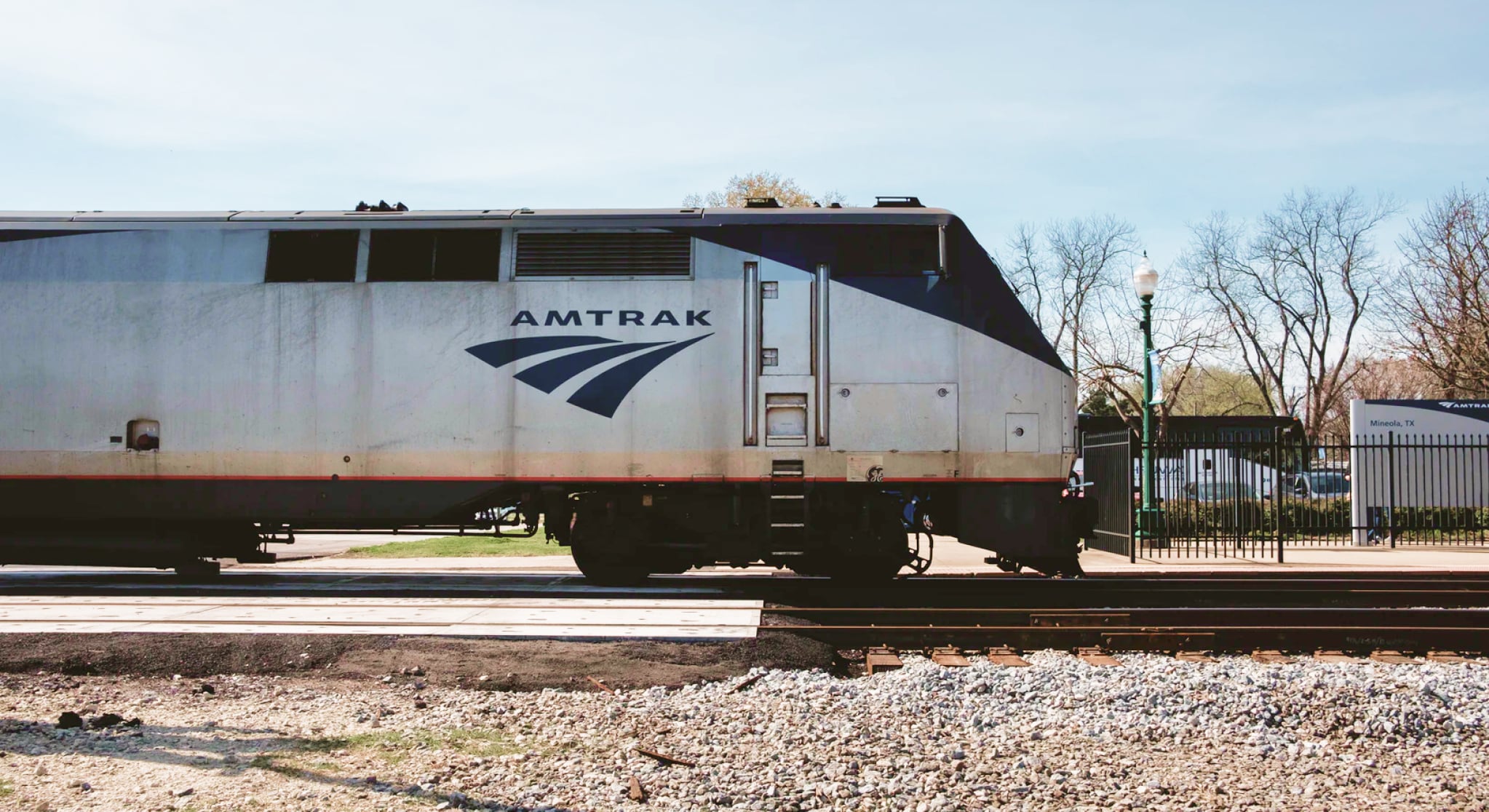Chicago was built by railroads. President Biden’s new infrastructure bill could build it again.
While Chicago’s position as the linkage between the Great Lakes and the Mississippi River was its original economic driver, America’s railroads completely eclipsed waterway shipping in the mid-1800s and the city never looked back. Passengers flooded in on busy intercity rail lines from cities across the midwest, while bulk goods and raw materials funneled in to be sorted and redirected.
In the century that followed, freight shipping remained a strong economic engine for Chicago, but due to massive federal investments in highways and airplanes, intercity passenger rail fell by the wayside. Of the city’s six original passenger rail terminals, only Union Station remains in service.
But in the last decade or so, rail’s environmental and socioeconomic benefits have fueled a resurgence of interest and investment in the midwest, throttled only by a lack of comprehensive federal support.
Enter “Amtrak Joe.”
The Proposed Bill
On March 31st, the president unveiled a $2.3 trillion infrastructure bill encompassing everything from manufacturing to broadband internet, with $80 billion earmarked for passenger rail. The bill would improve existing tracks (such as implementing Positive Train Control, a safety measure that allows trains to run at higher speeds without colliding), allow more frequent service (more available train trips per day), and create new services to cities without existing Amtrak routes.

What Chicago Stands to Gain
Although this is a federal bill with nationwide implications, it represents an especially massive potential benefit to the city of Chicago. Similar to how O’Hare’s hub status brings in hundreds of millions of dollars of yearly revenue, Chicago’s position at the center of the nation’s revitalized rail network would be a massive channel for new socioeconomic benefits, including:
- Economic mobility. Due to decades of cuts to public transit and sprawling suburban development, cars are effectively required in most American cities. Between monthly payments, insurance, maintenance and fuel, they’re the average family’s second highest annual expense (after housing). These expenses are often a major financial stumbling block for people with lower incomes. Reducing midwesterners’ dependence on cars would help them avoid unnecessary mileage, fuel, collision and insurance costs, which could be the difference between poverty and plenty.
- Decreased traffic. Chicago’s expressways are some of the busiest in the US, with the Eisenhower Expressway earning the title of being the nation’s busiest traffic corridor in 2020. This gridlock is dangerous and wasteful, and it dissuades people from entering and engaging with the city. Improved rail service would not only allow people to completely bypass this congestion, but by convincing them to leave their cars at home, it would free up space on the roads themselves.
- Tourism. The increased ease of getting to Chicago would make vacationing easier, cheaper and quicker for people living in smaller midwestern cities. The difference would be especially felt in places like Rockford and Iowa City, where the plan proposes to create brand new Amtrak lines. These would function not only as new revenue lines, but new outreach channels, boosting Chicago’s visibility and influence.
- Cleaner air. Fewer cars and airplanes arriving in Chicago means fewer pollutants circulating in the air. As-is, Chicago places 79th in national air quality ratings, ranking lower than Los Angeles, and the increasing suburbanization of the city is worsening its ranking year after year. While Amtrak Midwest’s diesel trains still produce particle emissions, its Siemens Charger locomotives are brand new and held to more stringent emissions standards than cars. Amtrak estimates its trains are up to 83% more energy efficient than driving and up to 73% more efficient than flying.
- Conventions. An often-overlooked boon of being a hub city is the prevalence of large conventions and trade shows. These extremely profitable events are held in Chicago specifically because of the city’s existing transportation infrastructure (it’s easy to get here) and numerous hotels (it’s easy to stay here). As the industry recovers from COVID-related cancellations, continued investment in Chicago’s hub status is a no-brainer.
- Fewer empty parking lots. There are three times as many parking spots in the US than people. They’re empty and desolate most hours of the day, and they take up a large amount of Chicago’s usable downtown space. By expanding travel options that don’t require this empty space, local developers will have more room to build dense new housing, business spaces and public amenities. In addition, because more people will be travelling on foot, architects and planners will be able to create more accessible, pedestrian-friendly streets and urban spaces.
- Intercity connectivity. Several existing Amtrak Midwest lines have undergone major track and equipment improvements in the last decade, allowing trains to travel up to 110mph. With similar improvements planned on routes connecting Chicago to Milwaukee, St. Louis, Detroit, Carbondale, Port Huron and Grand Rapids, day trips to visit family and friends in outlying cities would be quicker and more convenient. This would encourage more intercity economic activity between Midwestern cities in general, raising the value of the entire region.
How to Support the Bill
Wondering how you can support this bill? Well, because it’s up to the federal government, the only realistic influence Chicagoans can have is by spreading the word and making sure Illinois’s elected federal representatives vote for it. It’s likely that the majority of them will. On the state and local front, support appears to be high, with Governor Pritzker signing an Amtrak budget increase in spring 2019, which will help Illinois uphold its portion of the maintenance costs after the federal allotment has been spent.
In the meantime, take public transit, ride your bike, travel on foot, and encourage others to do the same. Your city will thank you.

